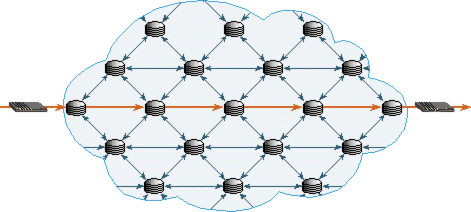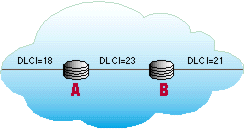Frame Relay
Frame Relay is a standard communication protocol that is specified in CCITT recommendations I.122 and Q.922 which adds relay and routing functions to the data link layer (layer two of OSI reference model). Frame Relay provides the minimal set of features to deliver frames over a network of permanent virtual circuits (PVC). It does not guarantee delivery or provide notice of lost frames.
Frame Relay Switch
A frame relay switch is a device that accepts Link Access Procedure D-channel (LAP-D) frames, reads the DLCI of each frame, and uses the DLCI to decide where to forward or relay the frame.
This illustration shows a portion of a PVC going through a frame relay network. Frames coming from the left are using a DLCI numbered 18. When they reach frame relay switch A, they are relayed to DLCI segment number 23. When they reach the next frame relay switch, B, they are relayed to DLCI segment number 21. Frames going from right to left relay their DLCIs in the opposite direction.
DLCI (Data Link Connection Identifier)
In a Frame Relay network, DLCIs uniquely identify segments of permanent virtual circuits connecting to a frame relay switch or frame relay subscriber. In most circumstances, DLCIs have strictly local significance at each Frame Relay interface.


